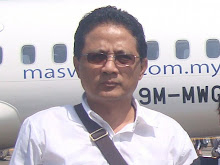Yayan G.H. Mulyana, Jakarta | Tue, 01/03/2012 6:00 AM A | A | A |-Klipping The Jakarta Post
On Dec. 19, 2011, President Yudhoyono officially announced the opening of a peacekeeping facility as part of the Indonesian Peace and Security Center in Sentul, Bogor. Through the peacekeeping center, Indonesia is expected to employ more peacekeepers with sufficient language proficiency, to develop stand by forces, and enhance its rapid deployment capacity.
President Yudhoyono also underlined the constitutional mandate and the perennial issue of maintaining international peace and security. These are two factors that ensure the persistent relevance and importance of Indonesia’s contribution to peacekeeping operations, in particular under the UN umbrella.
Peacekeeping operations have become an important instrument of Indonesia’s independent and active foreign policy. Its landmark contribution is a series of Garuda Contingents. The idea of a Garuda Contingent is as inventive as the idea of peacekeeping operations.
In the absence of viability of the concept of collective security as highlighted in the UN Charter in the height of the Cold War in 1950s, UN secretary-general Dag Hammarskjöld came up with an idea of establishing an emergency international UN Force to supervise the cessation of hostilities in the Suez Canal zone. With the authorization of the UN General Assembly, the UN Emergency Force (UNEF) was deployed, and marked the beginning of the first generation of UN peacekeeping operations.
Hammarskjöld regarded Indonesia as an impartial troop-contributing country (TCC) to UNEF. In response to the call for participation in UNEF, the first Garuda Contingent (Garuda Contingent I) was born. The Contingent was an Army battalion with 400 personnel consisting of a command group, three gun companies, and one platoon with artillery mortar and machine gun assistance. The Contingent personnel were drawn from the Infantry Regiment 15 of the Territorial Army IV/Diponegoro and the Infantry Regiment 18 of Territorial Army V/Brawijaya.
Since UNEF I, Indonesia has deployed its Garuda Contingents in UN missions in the Republic of Congo (ONUC) in 1961-1963, in the Middle East (UNEF II) 1973–1979, in Iraq (UNIMOG) in 1988–1990, in Namibia (UNTAG) in June–December 1989, and Kuwait (UNIKOM) in 1991–2003.
The end of the Cold War in the late 1980s put some interstate conflicts to rest, but the world was still far from being peaceful as internal conflicts were evolving. The Balkan wars and intercommunal conflict in Siera Leonne and Rwanda, among others, had caused a surge in the demand for peacekeeping operations. As the post-Cold War era was unfolding, the Indonesian Garuda Contingents were taking part in many UN peace missions in Cambodia (UNTAC) in 1992–1993, in Somalia (UNOSOM) in 1992–1995, in Bosnia and Herzegovina (UNPROFOR and UNMIBH) in 1993– 2002, in Sierra Leone (UNAMSIL) in 1999–2005, and in the Democratic Republic of the Congo (MONUC—now MONUSCO) from March 2001 until today.
UNTAC has been regarded as a multidimensional mission that symbolizes a new generation of peacekeeping operations. Its strong peace building element had included a large number of civilians in the mission, in addition to military components. Indonesia’s role was notable not only in the implementation of the mission but also in the political process through the Jakarta Informal Meetings (JIM) leading toward the Paris Agreement. Based on this Agreement, the UN Security Council adopted Resolution 745 (1992), which authorized the establishment of UNTAC. This mission was to comprise between 15,000 and 20,000 UN personnel, including human rights, civil administration and military components, as well as a police component of some 3,600 police monitors.
Today, Indonesia’s participation in the UN peacekeeping operations is entering a new chapter. This is true at least for two reasons.
First, for the first time in the history of Indonesia’s peacekeeping operations, Indonesia contributes its naval vessels as part of the UNIFIL Maritime Task Force. Indonesia is one of a few countries that support the Lebanese Navy in monitoring Lebanese territorial waters, securing its coastline and preventing the unauthorized entry of arms or related material by sea into the country. This deployment is in line with the UN Security Council Resolution 1701 (2006). This adds to the existing size of the Garuda Contingent in UNIFIL that has reached 1,456 peacekeepers — one of the largest.
Second, for the first time Indonesia participates in a UN peace mission in the Americas, namely the UN Stabilization Mission in Haiti (MINUSTAH). Before, Asia and Africa, then Europe, had been the traditional area of deployment of the Garuda Contingent. Now, with Indonesia’s contribution of military and police personnel in MINUSTAH, the world becomes the theater of deployment for the Garuda Contingent.
With the establishment of the peacekeeping center, Indonesia has the opportunity to develop a peacekeeping operations capacity that meets the requirements as outlined in the Brahimi reforms of the UN peacekeeping operations; to develop a rapid deployment capacity and to fulfill the vision of deploying 4,000 peacekeepers.
It is also important that the newly established center includes in its priorities a capacity to contribute a civilian component to a multidimensional peacekeeping mission. This civilian component would comprise legal experts, engineers, accountants, development specialists, public administration experts, electoral specialists, medical doctors, education specialists, and other relevant professionals.
Peacekeeping operations will continue to be an essential instrument of Indonesian bebas aktif foreign policy. And the newly founded peacekeeping center could help the country enlarge its contribution to the UN and other peace missions in the future.
The writer is an assistant to Special Staff to the President for international relations. The opinions are his own.
Subscribe to:
Post Comments (Atom)

No comments:
Post a Comment